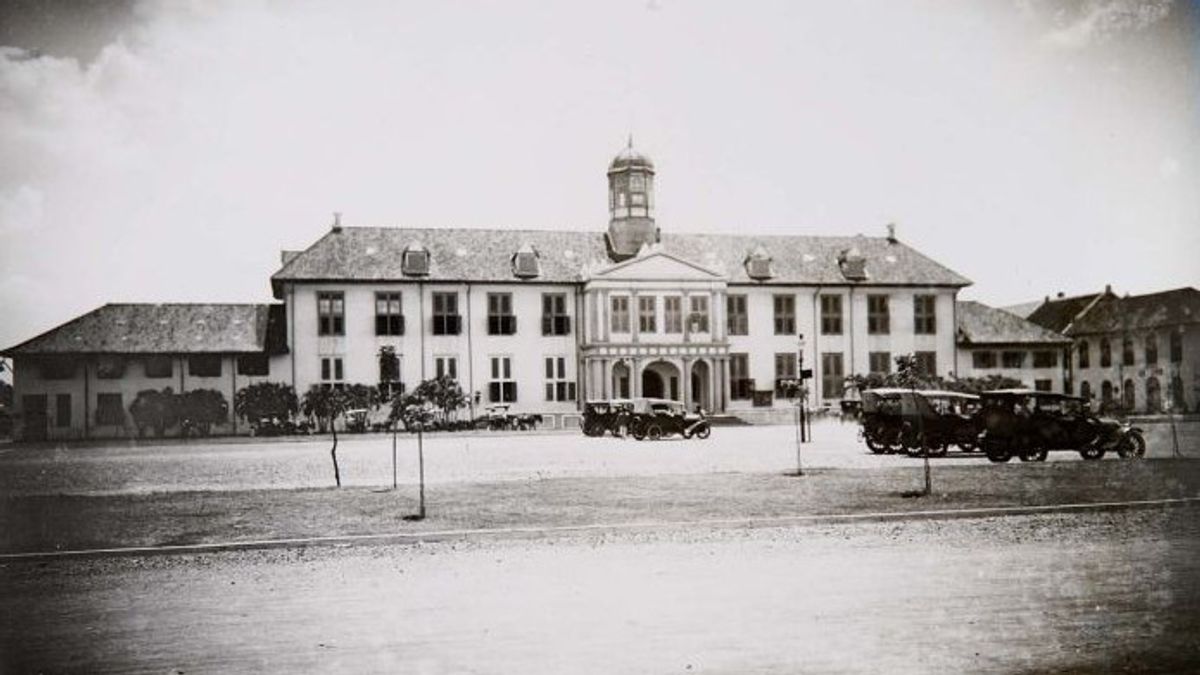JAKARTA History today, 316 years ago, January 25, 1707, the laying of the first stone for the construction of the Batavia City Hall (now: Jakarta History Museum) was held. The daughter of the Governor General of the VOC, Joan van Hoorn, Petronella Wilhelmina who was asked to carry out the procession.
Previously, the Company had twice built a city hall and was less magnificent. The Company wants its city hall to be grandiose like the Dam Palace in Amsterdam. Everything is done for the totality of services in Batavia.
Batavia City (now: Jakarta) has an important meaning for the Dutch trading airline, the VOC. The location is considered so strategic as one of the centers of spice trade. This advantage made the Company promote development in Batavia.
The colony was then changed like cities in the Netherlands. From the shape of buildings to canals. Everything is to treat the longing of the Dutch people to be far from their hometowns. Alias, Batavia was designed as a means of covering the lare.
Facilities and infrastructure in Batavia were deliberately built following the tastes of the times. The construction of Batavia City Hall, for example. The Company built its first city hall on the east bank of the Ciliwung River in 1620. The presence of the city hall is considered an important part of the growth and development of Batavia as a colony.
This is because the city hall was built as an administrative center in Batavia. Sometimes it is also used for all kinds of affairs. From paying taxes to bribes. However, the first city hall was not optimal. The building was gradually unusable since the Company went to war with Mataram. Finally, the second city hall was rebuilt in the area which is now the center of Oud Batavia (Old City).
The first very simple city hall was founded in a hurry in 1620 on the east bank of Ciliwung, slightly south of the bridge. The building only lasted six years, because it was dismantled before the Sultan Agung attack (1626), so that it could shoot freely.
The second city has been used as a burial place for Jan Pieterszoon Coen, the founder of Batavia for some time. He died ofteger disease, the attack of the two Mataram soldiers (1629)," said historian Adolf Heuken in the book Historical Places in Jakarta (2016).
The second city hall building was not very satisfying. The second hall was considered too small and simple. The Company also tried to initiate the construction of a third city hall in the same location. The Batavia City Hall building at that time wanted to be made to resemble the Dam Palace in Amsterdam.
The construction was also carried out. The groundbreaking ceremony was held. The Governor-General of the Governor-General of the VOC, Joan van Hoorn turn to his eight-year-old son, Petronella Wilhelmina van Hoorn, to lay the first stone on January 25, 1707.
The mayor began to be built after the long-developed building, namely on January 25, 1707 under the government of Mr. Governor General Joan van Hoorn. The construction was completed under the government of Mr. Governor General Abraham van Riebeeck on July 10, 1710, "said the inscription contained in the building which is now known as the Jakarta History Museum (Museum Fatahillah).
The English, Chinese, Japanese, Arabic, and French versions are automatically generated by the AI. So there may still be inaccuracies in translating, please always see Indonesian as our main language. (system supported by DigitalSiber.id)













